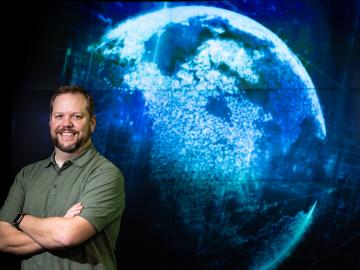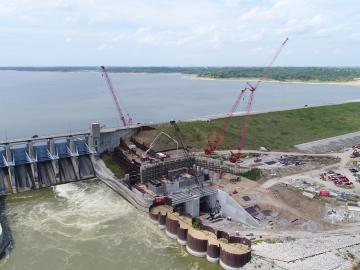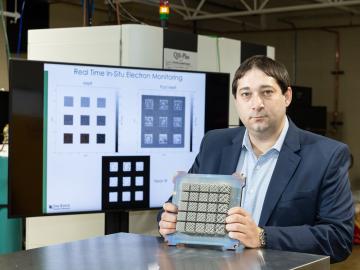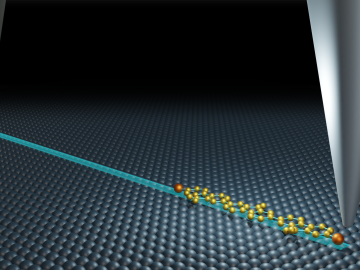
Filter News
Area of Research
- Advanced Manufacturing (12)
- Biology and Environment (22)
- Building Technologies (1)
- Computational Biology (1)
- Computational Engineering (1)
- Computer Science (6)
- Energy Science (42)
- Fusion and Fission (1)
- Fusion Energy (2)
- Isotopes (4)
- Materials (17)
- Materials for Computing (5)
- National Security (7)
- Neutron Science (5)
- Nuclear Science and Technology (1)
- Quantum information Science (3)
- Supercomputing (15)
News Type
News Topics
- (-) 3-D Printing/Advanced Manufacturing (47)
- (-) Artificial Intelligence (25)
- (-) Big Data (29)
- (-) Biomedical (24)
- (-) Hydropower (8)
- (-) Machine Learning (24)
- (-) Microscopy (22)
- (-) Quantum Science (16)
- (-) Summit (10)
- Advanced Reactors (15)
- Bioenergy (40)
- Biology (48)
- Biotechnology (11)
- Buildings (31)
- Chemical Sciences (22)
- Clean Water (21)
- Composites (14)
- Computer Science (56)
- Coronavirus (17)
- Critical Materials (14)
- Cybersecurity (9)
- Emergency (1)
- Energy Storage (45)
- Environment (88)
- Exascale Computing (4)
- Fossil Energy (1)
- Frontier (4)
- Fusion (18)
- Grid (29)
- High-Performance Computing (23)
- Irradiation (2)
- Isotopes (18)
- ITER (4)
- Materials (45)
- Materials Science (49)
- Mathematics (8)
- Mercury (7)
- Molten Salt (5)
- Nanotechnology (18)
- National Security (20)
- Neutron Science (37)
- Nuclear Energy (35)
- Partnerships (4)
- Physics (20)
- Polymers (15)
- Quantum Computing (6)
- Security (8)
- Simulation (17)
- Space Exploration (10)
- Statistics (1)
- Transportation (48)
Media Contacts

A team of Oak Ridge National Laboratory researchers demonstrated that an additively manufactured hot stamping die – a tool used to create car body components – cooled faster than those produced by conventional manufacturing methods.

Cory Stuart of ORNL applies his expertise as a systems engineer to ensure the secure and timely transfer of millions of measurements of Earth’s atmosphere, fueling science around the world.

To better understand the spread of SARS-CoV-2, the virus that causes COVID-19, Oak Ridge National Laboratory researchers have harnessed the power of supercomputers to accurately model the spike protein that binds the novel coronavirus to a human cell receptor.

Oak Ridge National Laboratory researchers have demonstrated that a new class of superalloys made of cobalt and nickel remains crack-free and defect-resistant in extreme heat, making them conducive for use in metal-based 3D printing applications.

Collaborators at Oak Ridge National Laboratory and the University of Tennessee Health Science Center are developing a breath-sampling whistle that could make COVID-19 screening easy to do at home.

A new Department of Energy report produced by Oak Ridge National Laboratory details national and international trends in hydropower, including the role waterpower plays in enhancing the flexibility and resilience of the power grid.

Growing up in the heart of the American automobile industry near Detroit, Oak Ridge National Laboratory materials scientist Mike Kirka was no stranger to manufacturing.

Oak Ridge National Laboratory’s Center for Nanophase Materials Sciences contributed to a groundbreaking experiment published in Science that tracks the real-time transport of individual molecules.

Algorithms developed at Oak Ridge National Laboratory can greatly enhance X-ray computed tomography images of 3D-printed metal parts, resulting in more accurate, faster scans.
Oak Ridge National Laboratory and collaborators have discovered that signaling molecules known to trigger symbiosis between plants and soil bacteria are also used by almost all fungi as chemical signals to communicate with each other.


